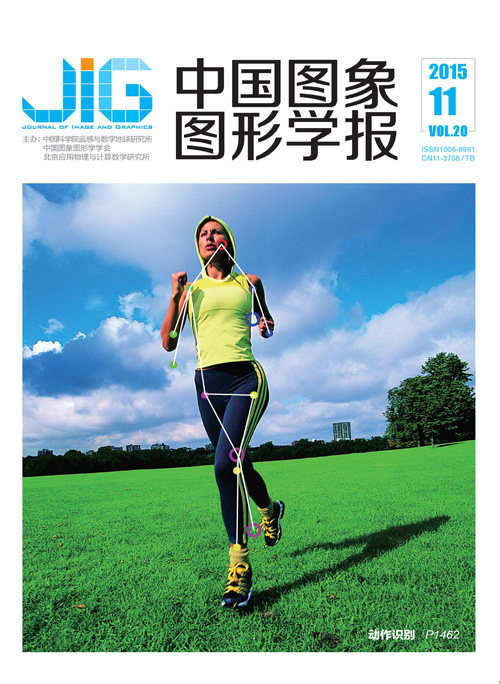
突破环境限制的导盲方法
摘 要
目的 目前的导盲机器人大都局限于特定的环境,难以适应环境变换,为使导盲机器人突破空间限制,在多种不同的环境中引导盲人,提出一种基于环境地图创建的导盲方法。方法 首先,根据同步定位与制图算法(SLAM)创建2维环境地图并同步定位;然后,采用A*启发式算法在已知地图中进行静态全局路径规划,再结合人工势场法在导盲机器人行走过程中进行动态避障;最后,在机器人操作系统(ROS)框架下构建导盲机器人软件控制系统,各功能节点按照特定规则相互通讯,使控制系统更加有序高效。结果 在3种典型的环境下进行实验,结果表明,与其他导盲方法相比,本文方法不再拘泥于单一的空间或特定的环境,适用范围更广也更灵活;此外,导盲精度也更高,地图创建过程中,特征总数达30个时,特征估计误差仅为5~35 cm,行走多达12000步时,自身位置估计误差仅为0~3 m,在路径规划过程中,导盲机器人路径长达100 m时的轨迹误差仅在0.4 m以下;相较而言,此方法更能满足日常导盲需要。结论 本文提出的适用于多种环境的导盲方法,实验结果表明,该方法在多种环境中所创建的地图与实际场景相符,导盲机器人行走轨迹与规划路径基本一致,导盲精度相对较高,并且普遍地适用于视力障碍者日常活动的室内外区域,还能灵活地适应环境的变换,更具实用价值。
关键词
Guiding the blind to overcome environment limitation
Zhang Tan, Chen Chao(College of Mechanical Engineering, Jiangsu University of Science and Technology, Zhenjiang 212003, China) Abstract
Objective At present, the total number of the visually handicapped in the world is large and continues to grow. However, most seeing-eye robots are limited to the specific environment or single spaces and have difficulty adapting to changes in environment. Thus, these robots lack practical value to meet the needs of society. To overcome the space limitation and guide the blind in different environments, this paper proposes an effective method for guiding the blind based on the creation of environmental maps to expand the scope of the environmental adaptation of the seeing-eye robot. Method First of all, simultaneous localization and mapping (SLAM) is used to create a two-dimensional map of the environment, in which the seeing-eye robot localize itself and simultaneously build an environmental map based on observational features and position estimation;Then, the A* heuristic search algorithm is used to plan a global path to find an optimal path without collision in the static map that has been created. The artificial potential field algorithm is then combined to avoid the dynamic obstacles detected by the seeing-eye robot when walking along the global path;Finally, the software control system of the seeing-eye robot is constructed using the robot operating system (ROS) framework so that the functional nodes can communicate with each other to obtain the required data based on certain rules, thereby making the whole control system more orderly and efficient. Result The experiments were carried out in three typical surroundings, such as an office, a long corridor of big building, and an outdoor rest area. The result of the experiments proved that, compared with other blind methods, the proposed method is applicable to a wider range and more flexible environment and is no longer limited to a single space or specific environment. In the process of creating the map, the feature estimated error is only within the range of 5cm-35cm when the total number of features is 30 and the position estimated error is less than 3m when the walking steps are up to 12000 steps. In planning the path, trajectory error is under 0.4m when the length is up to 120m. By comparison, the proposed method is more practical and superior for guiding the blind. Conclusion This paper presents a method for guiding the blind applicable to various environments. The corresponding experimental results demonstrate that the map created by the method is consistent with the actual scene and the trajectory of the robot is essentially identical to the planned path in various environments, so its precision is relatively high. The method is generally applicable to indoor and outdoor areas of the daily activities of the visually handicapped and the method is sufficiently flexible to adapt to transformation in the environment. Therefore the method proposed by this paper is more practical and effective for guiding the blind.
Keywords
|



 中国图象图形学报 │ 京ICP备05080539号-4 │ 本系统由
中国图象图形学报 │ 京ICP备05080539号-4 │ 本系统由